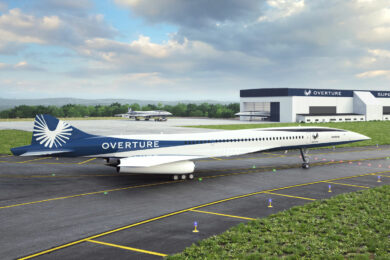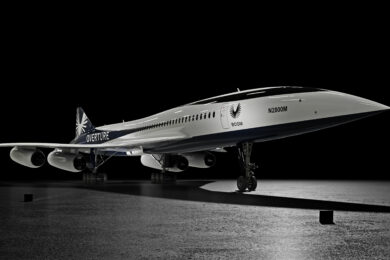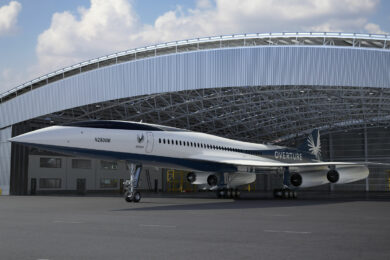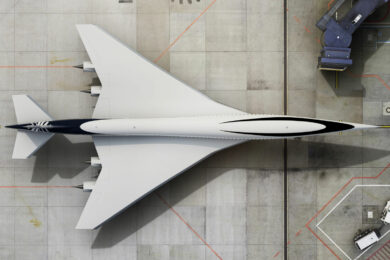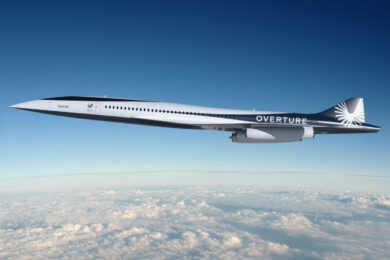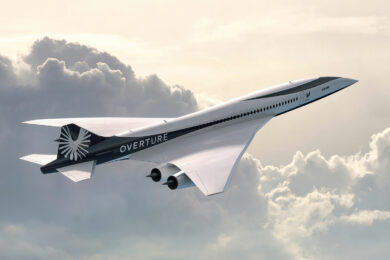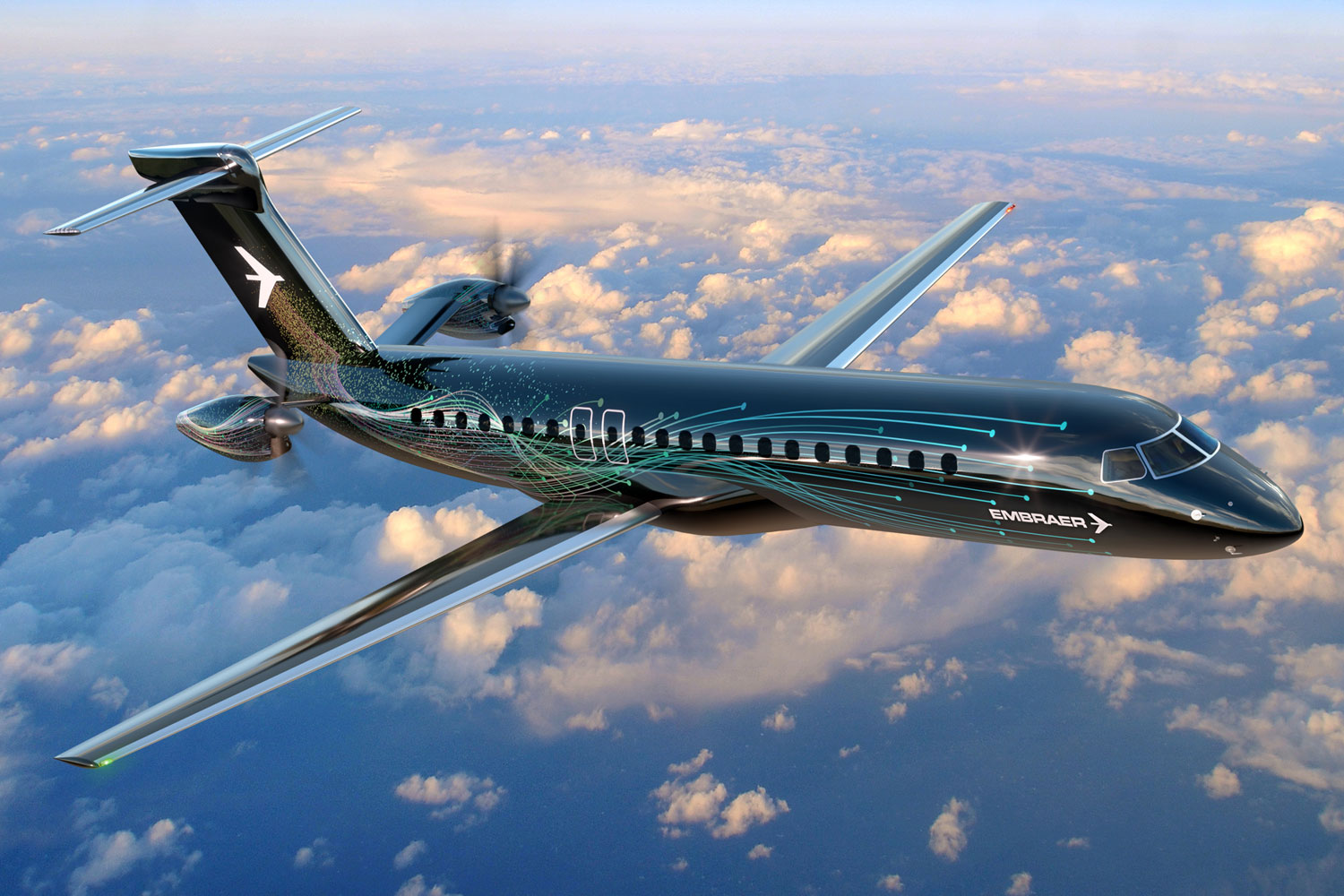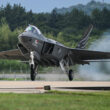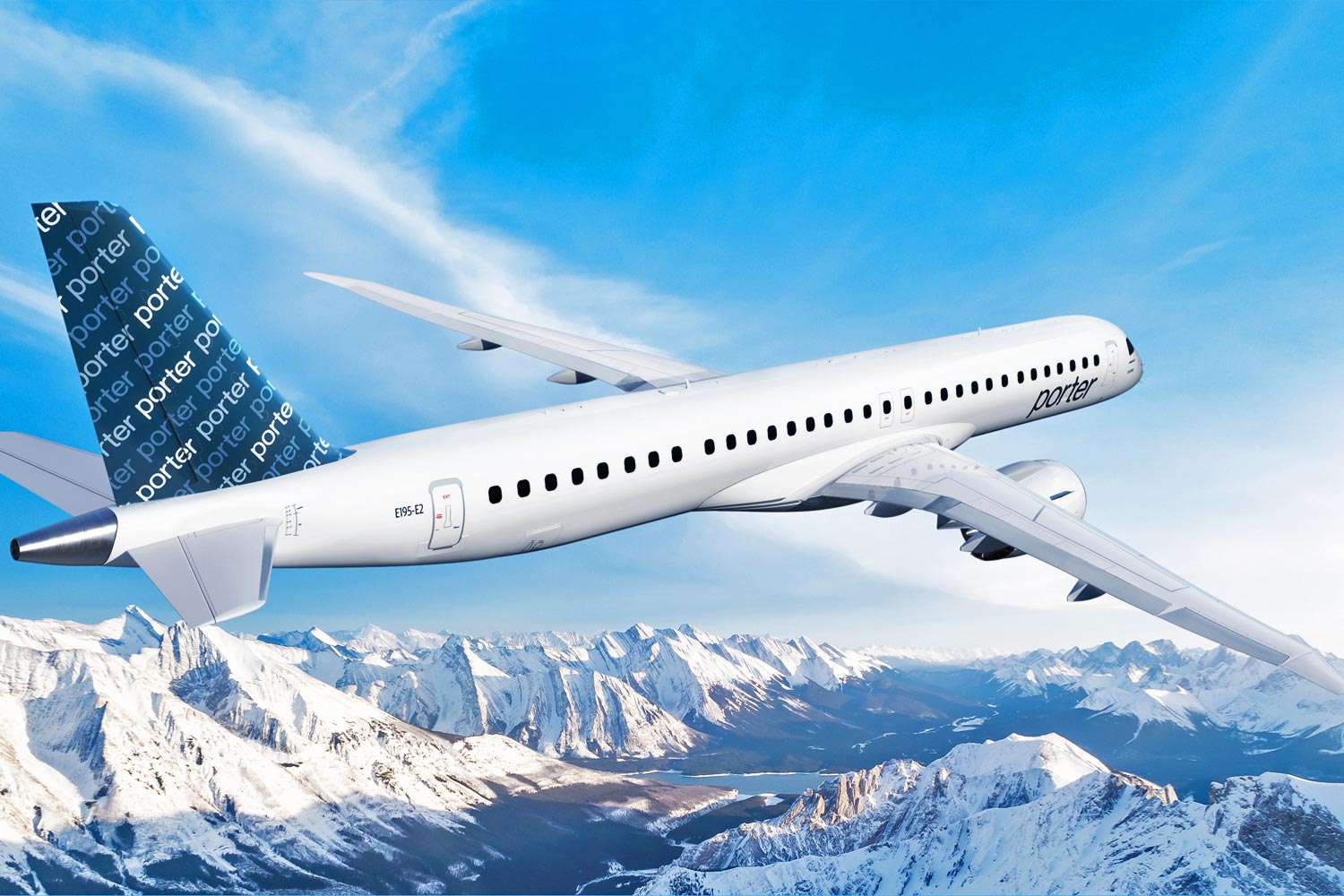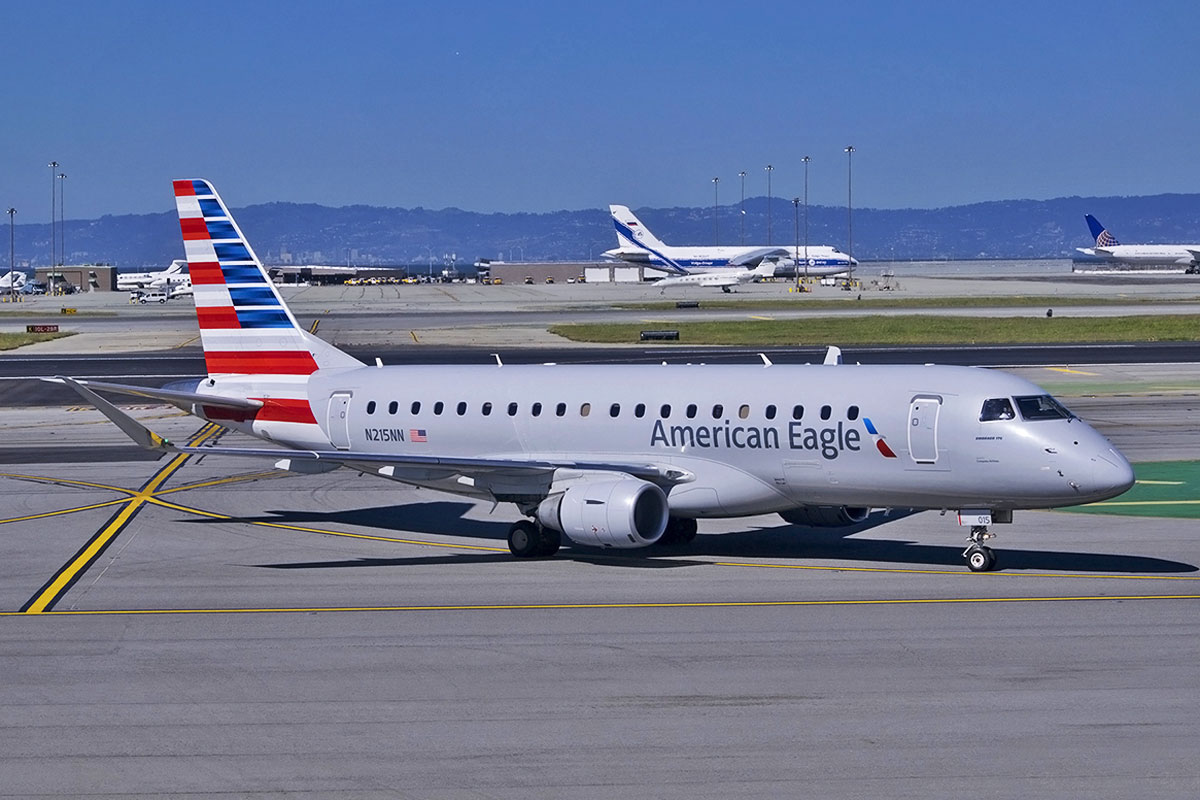Boom Supersonic has revealed drastic changes to its Overture project, a commercial jet for up to 80 passengers that will be able to fly up to Mach 1.7.
Although the US company claimed it was a refinement of the original design, the aircraft on display is now completely different, with four engines under the wings instead of the three-engine configuration that was presented until then.
The Overture also has a “contoured” fuselage, with different diameters, to reduce aerodynamic drag and noise. In addition, the jet has a new gull wing and conventional tail.
See also:
Previously, the supersonic aircraft bore a resemblance to the Concorde, including the air intake of the engines, placed close to the trailing edge of the wings (albeit with a third engine at the rear of the fuselage).
In the revised design, the Overture came to resemble the Boeing 2707, the supersonic jet project that the US government funded in the 1960s but was eventually cancelled.
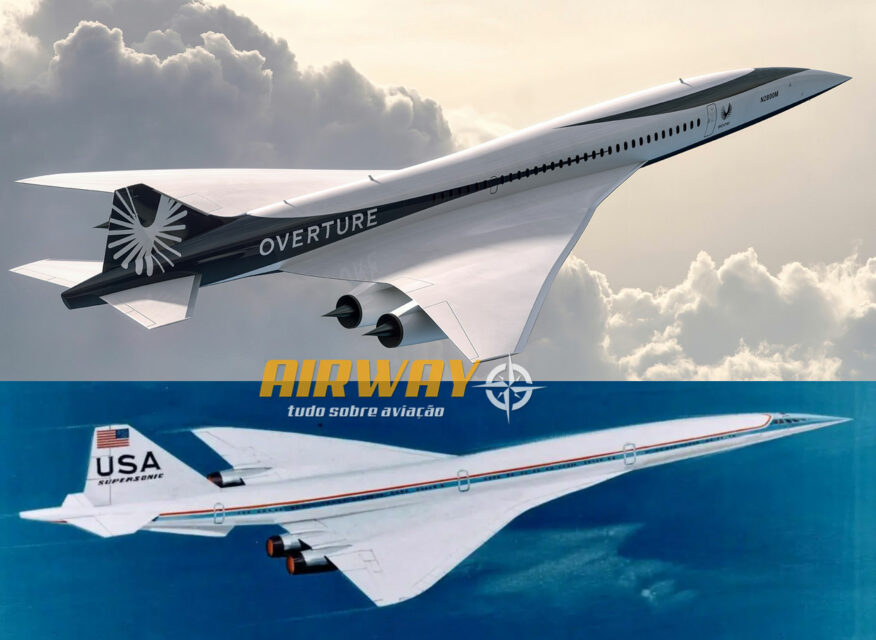
Subsonic flight over the continent
Boom also shared some characteristics of Overture, such as the fact that it maintains supersonic flight only over oceans while maintaining Mach 0.94 when flying over the mainland.
It will be a way to adapt to the noise pollution restrictions associated with supersonic flight. However, this situation must be overcome through studies carried out by NASA and other agencies to avoid the supersonic boom, which is generated when the aircraft exceeds the speed of sound.
The Overture will make extensive use of carbon composites, which are lighter and stronger and can be produced in the complex curves needed to increase aerodynamic efficiency.
According to Boom, the use of four engines will make the supersonic jet safer and quieter in addition to offering lower cost to operators. The company, however, did not provide details on the supplier of the afterburner turbofan.
“Aviation has not seen a giant leap in decades. Overture is revolutionary in its design, and it will fundamentally change how we think about distance,” said Boom Founder and CEO Blake Scholl. “With more than 600 routes across the globe, Overture will make the world dramatically more accessible for tens of millions of passengers.”
Overture is expected to enter service in 2029. The maiden flight is scheduled for 2026, after two years of production. Before that, Boom prepares the first flight of the XB-1, a demonstrator that however maintains a format similar to the original design of the Overture, with three engines.


